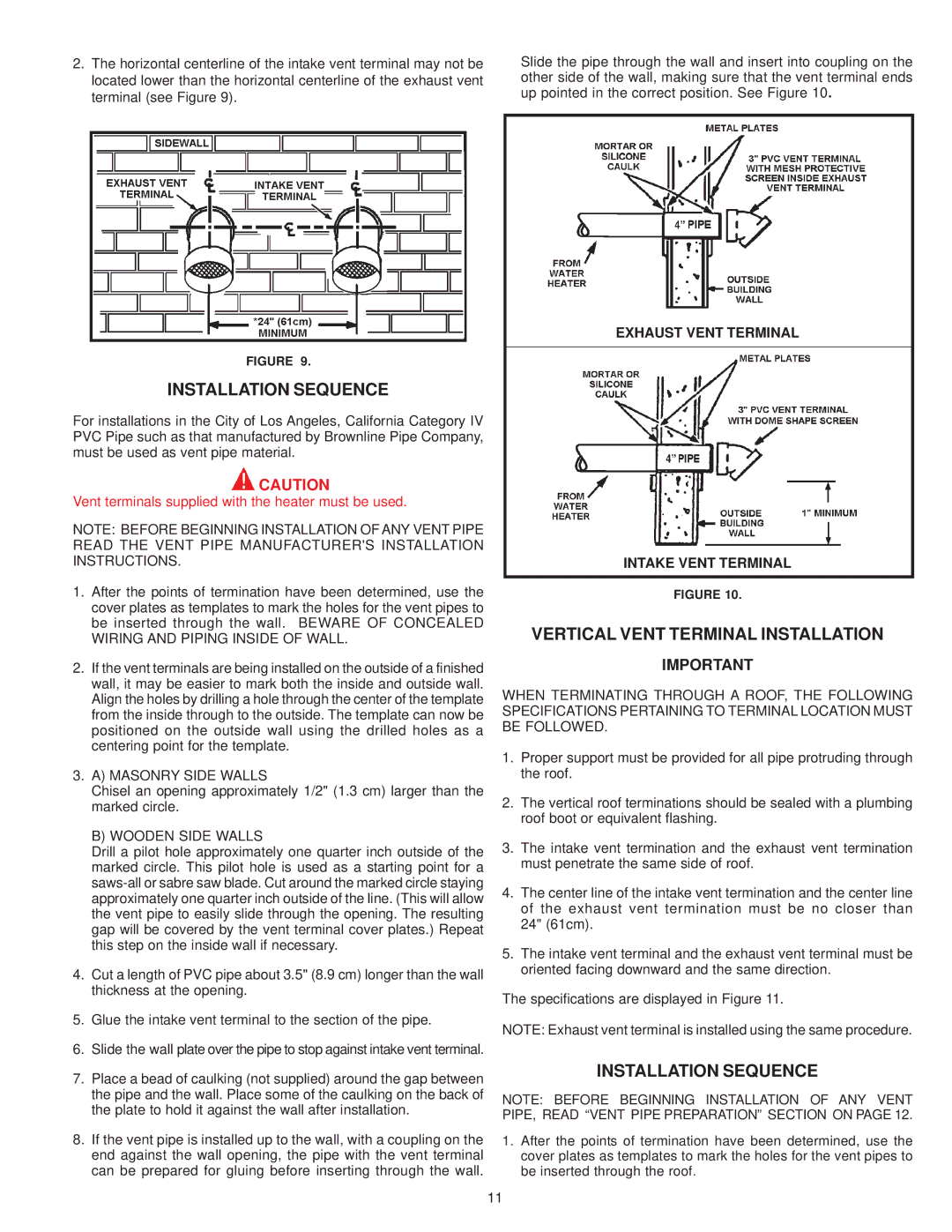BTH 300A, BTH 400A specifications
A.O. Smith has established itself as a leader in the water heating industry, offering a range of products that combine efficiency, reliability, and innovative technology. Among these products, the BTH 300A and BTH 400A models stand out for their advanced features and robust performance, catering to both residential and commercial needs.The BTH 300A and BTH 400A are high-efficiency water heaters designed with cutting-edge condensing technology, allowing for significant energy savings compared to traditional water heating systems. These models utilize a modulating gas valve that adjusts the burner operation based on the demand for hot water. This smart system not only enhances efficiency but also ensures a consistent supply of hot water without the worry of fluctuations.
One of the standout features of the BTH series is its compact design. Both the BTH 300A and BTH 400A are engineered to fit into smaller spaces, making them ideal for properties with limited installation areas. Their lightweight construction and user-friendly installation features further simplify the process, ensuring that homeowners and professionals alike can set them up with ease.
The BTH models are equipped with advanced control systems that offer precise temperature adjustment capabilities. Users can easily customize their hot water settings to meet specific household or business requirements. This adaptability is supported by the built-in digital display, which provides real-time information about the operating status of the unit.
Safety is a key consideration in the design of the BTH 300A and BTH 400A. They feature a robust set of safety mechanisms, including temperature lockout and venting safeguards, ensuring reliable operation and peace of mind for users. A.O. Smith also understands the importance of longevity in water heaters, and these models are built with high-quality materials, making them resistant to corrosion and wear over time.
In terms of performance, both the BTH 300A and BTH 400A models deliver exceptional heating capabilities, capable of meeting high demands while maintaining efficiency. With customer satisfaction at the forefront, A.O. Smith backs these units with an extensive warranty, demonstrating their commitment to quality and long-term performance.
In summary, the A.O. Smith BTH 300A and BTH 400A water heaters exemplify the marriage of innovation and functionality. With their energy-efficient operation, customizable settings, compact design, and advanced safety features, these models are a compelling choice for those in need of reliable and effective hot water solutions.

